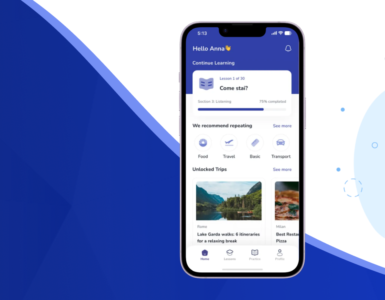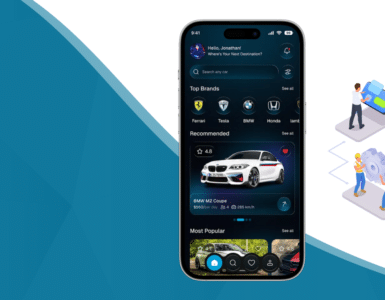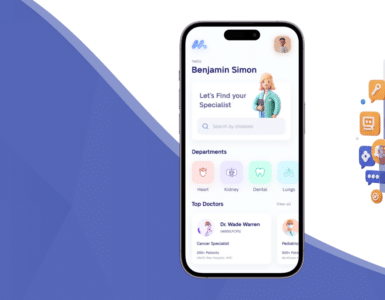The Internet of Things (IoT) has transformed from a niche concept to a vital part of our interconnected world. In 2025, IoT is no longer considered futuristic—it is foundational. From smart homes and connected vehicles to automated factories and digital healthcare, IoT is everywhere. With projections estimating over 25 billion connected devices globally, the ecosystem is rapidly growing, bringing with it both immense opportunity and considerable complexity.
If you’re a business leader, entrepreneur, or tech innovator planning to tap into this booming sector, understanding the developing an IoT application is essential. In this guide, we break down every major cost factor, emerging trends, and post-development considerations to help you make well-informed investment decisions.
- Starting with a Clear Vision: Define Your IoT App
Before any development begins, it’s crucial to understand your application’s goals and requirements. This helps align your budget, resources, and timeline effectively.
Ask yourself these questions:
- What problem does your app solve? Define the exact need you’re addressing.
- Who is your target audience? Is it homeowners, industrial users, patients, or businesses?
- What devices or sensors will your app connect to? Hardware integration is central to IoT.
- What key features will the app include? Will it offer real-time data tracking, remote control, analytics, or AI?
- What is your budget and desired timeline? The complexity of your goals should align with your financial and time resources.
Properly addressing these questions lays the groundwork for your project’s success.
- Key Factors That Influence IoT App Development Costs
Let’s examine the elements that can impact your development budget.
- Application Complexity
IoT applications can be categorized into three broad levels:
- Basic Applications: These are simple solutions like smart plugs or lighting systems. Cost ranges from $30,000 to $50,000.
- Moderately Complex Applications: These might include features like geolocation, cloud synchronization, or real-time monitoring. Costs typically fall between $50,000 to $150,000.
- Enterprise-Level or Advanced Applications: These involve artificial intelligence, machine learning, big data integration, or industrial automation. Such solutions may start at $200,000 and above.
- Development Time
The duration of development depends on the app’s complexity:
- Basic Apps: Require about 400–600 hours.
- Moderate Apps: Require 600–900 hours.
- Complex Apps: Can take 1000+ hours of development.
The longer the project, the higher the development cost.
- Team Composition
A comprehensive IoT app typically requires a multidisciplinary team:
- Project Manager
- Backend & IoT Developers
- UI/UX Designers
- QA Engineers
- Cloud Solutions Architect
- AI/ML Engineer (for advanced analytics)
Larger or more skilled teams can ensure faster delivery and higher quality but will naturally cost more.
- Security & Compliance
Data security is critical in IoT due to constant data exchange between connected devices. Secure encryption, two-factor authentication, and firmware update mechanisms are necessary. These features add to the cost but are non-negotiable, especially in healthcare, finance, and industrial IoT applications.
- Emerging Trends That Impact Development Costs
As IoT evolves, emerging technologies also influence development strategy and expenses:
- Edge Computing
By processing data locally (at the “edge” of the network), latency is reduced, and bandwidth usage is optimized. While integrating edge computing may require advanced architecture, it boosts performance in industrial and healthcare IoT solutions.
- 5G and Wi-Fi 7
The global rollout of 5G and the emergence of Wi-Fi 7 are game-changers. They enable higher speeds, better coverage, and support for more devices. But designing your app to handle these technologies can increase complexity and development cost.
- AI and Machine Learning
Incorporating AI can significantly enhance an IoT application—by enabling predictive maintenance, real-time anomaly detection, and automated decision-making. However, AI-driven apps demand more resources, adding to the development cost.
- Post-Development Costs: Testing, Deployment & Maintenance
- Testing and Deployment
Thorough testing is vital to ensure security, scalability, and performance. This involves:
- Testing hardware compatibility
- Platform responsiveness
- Performance under varied network conditions
- Regulatory compliance
Deployment, which includes preparing your app for different platforms and configuring backend systems, can take anywhere from 40 to 150 hours.
- Maintenance and Updates
IoT apps need regular updates for bug fixes, hardware compatibility, and feature upgrades. Annual maintenance typically costs 15% to 25% of the original development budget. It’s an ongoing commitment—not a one-time expense.

- Regional Cost Differences
Development rates vary significantly depending on geography:
- North America: $60–$160/hour
- Western Europe: $50–$100/hour
- Eastern Europe: $35–$70/hour
- India: $25–$50/hour
- Southeast Asia: $20–$40/hour
Offshoring development can reduce costs but may introduce challenges in terms of time zone alignment, language barriers, and project management.
- Industry-Wise Cost Estimates
Here’s an overview of development costs for various industries based on the creation of a Minimum Viable Product (MVP):
- Environmental Monitoring: ~$12,000
- Healthcare Applications: ~$35,000
- Smart Homes / Home Automation: ~$55,000
- Industrial IoT (IIoT): $60,000–$100,000
- Smart Retail & Inventory Tracking: ~$40,000
These figures can climb quickly if AI, predictive analytics, or multi-platform integration are required.
- Common Challenges in IoT App Development
Despite its potential, IoT development poses several challenges:
- Integration of multiple devices with different standards
- Real-time synchronization
- Geolocation tracking
- Social media integration
- Data privacy compliance
These hurdles demand time, expertise, and robust architecture—all of which add to development costs.
- Estimating Your Total Budget
Based on the factors outlined above, here’s a rough estimate of IoT app development costs:
- Small-sized Project: Around $18,000
- Medium Project: Between $18,000 and $24,000
- Complex or Enterprise-Level Project: Starts at $30,000 and can exceed $200,000
These numbers are only starting points. Your actual costs will vary based on your app’s features, timeline, technology stack, and team location.
- Final Thoughts: Strategic Investment in IoT
Over the last few years, the IoT industry has gained massive momentum. Businesses across sectors—healthcare, agriculture, manufacturing, transportation—are investing in IoT solutions to optimize operations, enhance customer experiences, and create new revenue streams.
IoT is no longer a luxury; it is a necessity. Whether it’s a smart city initiative, a connected health platform, or an intelligent inventory system, the value lies not just in building the technology, but in doing it strategically.
As with any innovation, the key to success lies in thorough planning, understanding cost implications, and partnering with the right development team. With IoT continuing to influence how we live, work, and interact, now is the right time to turn your vision into a scalable, secure, and user-centric IoT application.
























